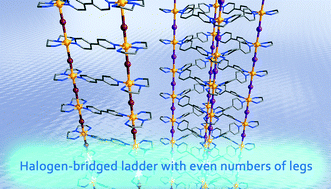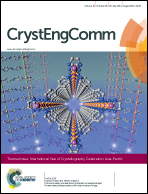Structural design and electronic properties of halogen-bridged mixed-valence ladder systems with even numbers of legs
Abstract
Ladder materials situated in a dimensional crossover region have attracted significant attention because of their unique physical properties, which depend strongly on the number of their constituent legs. Among them, metal–organic halogen-bridged ladder systems are currently of particular interest. These new series of ladder materials are composed of two or four halogen-bridged transition-metal complexes, the so-called MX-chains, as legs that are connected to each other by organic rung units. To date, a variety of two- and four-legged halogen-bridged ladder compounds, called MX-ladders, have been synthesized. We present an overview of design strategies, crystal structures, and unique electronic properties of MX-ladder materials with even numbers of legs. Utilization of coordination chemistry provides a high number of structural and electronic degrees of freedom, a striking feature of the MX-ladder system compared with transition-metal-oxide ladder systems. Not only their structural features including tunability via rung substitution but also their unique electronic properties depending on the number of legs and electronic states have recently been revealed.

- This article is part of the themed collection: International Year of Crystallography Celebration: Asia-Pacific

 Please wait while we load your content...
Please wait while we load your content...